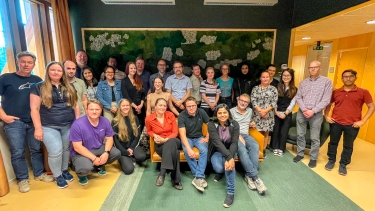Emerging technologies open up a huge range of uses for wood

Switching from fossil-based products to renewable wood-based products can help combat climate change and achieve Sustainable Development Goals, according to a new report authored by EFI researchers and published by FAO.
The publication, Forest Products in the global bioeconomy: Enabling substitution by wood-based products and contributing to the Sustainable Development Goals, brings together the most up-to-date knowledge on the role of forest products in the global bioeconomy and provides recommendations on how to increase their contribution to sustainable development.
Under existing trends, the global extraction of natural resources is estimated to more than double by 2050 and which is associated with a strong increase in greenhouse gas emissions. “Using wood as raw material for making products can contribute to climate change mitigation” says Dr. Hans Verkerk who coordinated the report. “This is because wood-based products store carbon and their use can help to avoid greenhouse gas emissions that occur over the lifetime of a product, as compared to other materials such as concrete, steel, plastics and synthetic fibres” he explains.
Emerging technologies
The report outlines emerging products that open up a range of uses while decreasing material and carbon footprints and reducing pollution and waste generation.
The forest-based industry has been evolving and the reports provides insight in the development of many innovative wood-based products that have sustainability as one of their pillars. This can be seen in the engineered wood products used in mass timber construction, the recyclable and fully biodegradable composite materials for packaging, or on garments made of wood-based fibres that are produced without harsh chemicals. “When it comes to the development of wood-based products, there is still a lot of untapped potential” says Dr. Mariana Hassegawa who co-authored the report. “Focus should be given to technologies that can solve some of the environmental impacts by non-renewables while taking advantage of the available residues from the industry” she adds.
Verkerk and Hassegawa, however, warn of potential risks that could come with greater production and consumption of forest products, such as increased pressure on forests and forest-dependent people and unsustainable practices resulting in forest degradation and biodiversity loss.
The publication stresses the need for sustainable, Climate-Smart Forestry that supports biodiversity and other ecosystems to underpin an effective bioeconomy, and provides recommendations for different sectors to achieve this.
Full reference:
Verkerk, P.J., Hassegawa, M., Van Brusselen, J., Cramm, M., Chen, X., Imparato Maximo, Y., Koç, M., Lovrić, M., Tekle Tegegne, Y. 2022. Forest Products in the global bioeconomy: Enabling substitution by wood-based products and contributing to the Sustainable Development Goals. Rome, FAO on behalf of the Advisory Committee on Sustainable Forestbased Industries (ACSFI). https://doi.org/10.4060/cb7274en
Photo: ©srki66 / AdobeStock


